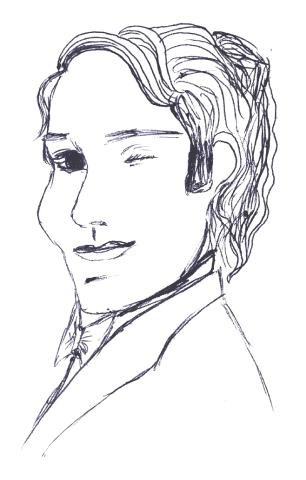
It’s 1976: “(Don’t Fear) The Reaper” by Blue Öyster Cult is crackling through car radios, Taxi Driver is playing in the theatres, and behind bars sits Theodore Robert Bundy. He will later be found guilty of the brutal murders of at least 30 women — many of whom were young, beautiful college students in the prime of their lives.
Bundy was executed in 1989, and yet, 30 years later, his name permeates the cultural discourse on the heels of the Sundance premiere of Extremely Wicked, Shockingly Evil and Vile. Between confused young women fawning over Zac Efron’s interpretation of the notorious serial killer and the rebuttal against the film’s gratuitous promotion of Bundy, the discussion is divided. Yet, both sides seem to be missing a very visceral point.
Ted Bundy, by first-hand accounts, was an intelligent, charismatic law student when he began to rape and butcher young women. That is the important takeaway point of all of this. On the surface, Bundy was a normal, successful and charming person — the kind of guy you may have locked eyes with across a crowded bar.
That was the illusion this man projected in order to lure unsuspecting women. These women were educated and intelligent people who were likely not easily duped — they just couldn’t see the hand that Bundy was dealing.
Anglerfish have a glowing filament that dangles in front of their jaws. In the dark, smaller fish are drawn to the light, unaware they are swimming towards danger. Bundy used a similar tactic — a charming, unassuming guise to lower the guard of his soon-to-be victims.
Just below this “great catch” facade lay his true insidious nature. The dishevelled stranger leering at you from a darkened corner is not the only danger of which you need to be cognizant. The horror of Bundy is that the boy next door may hold some dangerous and dark secrets that can cost you your life.
Most of the disgusted responses to the movie seem to be reactions to both the trailer and the strange, lecherous posts on social media. It seems that many critics, most of whom did not attend the Sundance premiere, have failed to look beyond an eerie wink directed towards the camera. They have failed to recognize that — minus the unnecessary, gratuitous ab shot of Efron — this was Bundy.
Critics have also failed to note a critical element to this tale. According to the official synopsis of the film, this is a chronicle of Bundy and his crimes from the perspective of his girlfriend, who was in denial for years about his true nature. This detail is crucial. We are looking at Bundy through the eyes of a woman that loved him.
In a recent Maclean’s article, Alicia Elliott wrote about her concerns with the sexy serial killer trope. Elliott ends the piece by saying she would instead prefer to see a movie about a woman who overcame the clutches of a serial killer and the impact the experience has had on the victim’s life. Yet, there are two key problems with this idea: it is something that could easily become exploitative of the survivor, and it’s already been done. More than once.
The fall of 1978 saw the release of the first movie in what would later become the prolific Halloween franchise. Laurie Strode defeats her masked attacker only after he’s massacred her friends. Michael Myers is depicted as the faceless incarnation of evil. It is reiterated throughout the films that he is not human.
And he comes back over and over again to torment her. Several of the sequels, including the 2018 Halloween film, show us just how damaged Strode is after all these years. The audience and Michael never give her a moment’s peace.
The release of Scream in 1996 set the stage for another survivor’s tale, with Sidney Prescott surviving a bloodbath carried out by a masked murderer who — unlike the faceless Michael Myers — was revealed to be Sidney’s boyfriend and his friend. Scream showed us that beneath the mask is not always the face of evil with hollow eyes but one familiar to us.
While the atrocities that Bundy committed certainly brand him as a monster, we should not turn a blind eye to the reality that Bundy passed for a normal, likeable person.
If you don’t believe me, then hear it from Kathy Kleiner Rubin, a survivor of Bundy’s attack on a sorority house in Florida. Kleiner Rubin told TMZ that the film shows the world who Bundy was. She said that Bundy wanted you to see the positive and wonderful things about him, but under the charming surface was something terrible. She hopes that it will make women more aware of their surroundings and more cautious.
While the thirst tweets about Bundy are horribly misguided, Extremely Wicked doesn’t appear to be. It’s asking viewers to take a long, hard, uncomfortable look at themselves, and it teaches them that evil isn’t a faceless entity — in fact, it might be one you know well.
—
Erin Matthews / Opinions Editor
Graphic: Gabe Fourstar